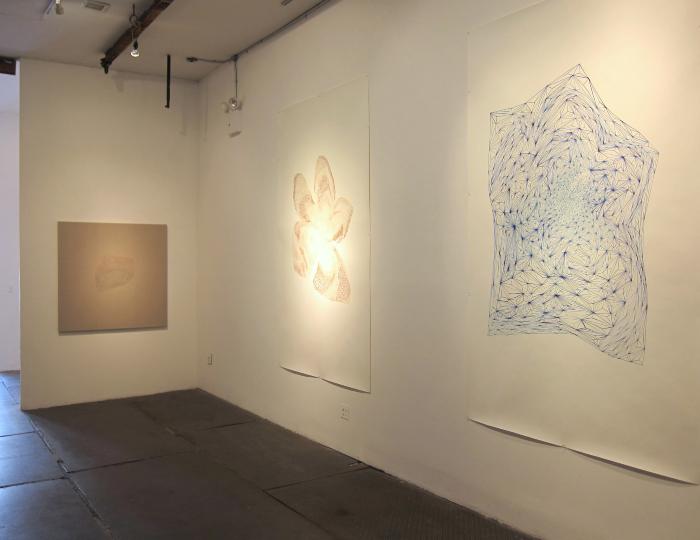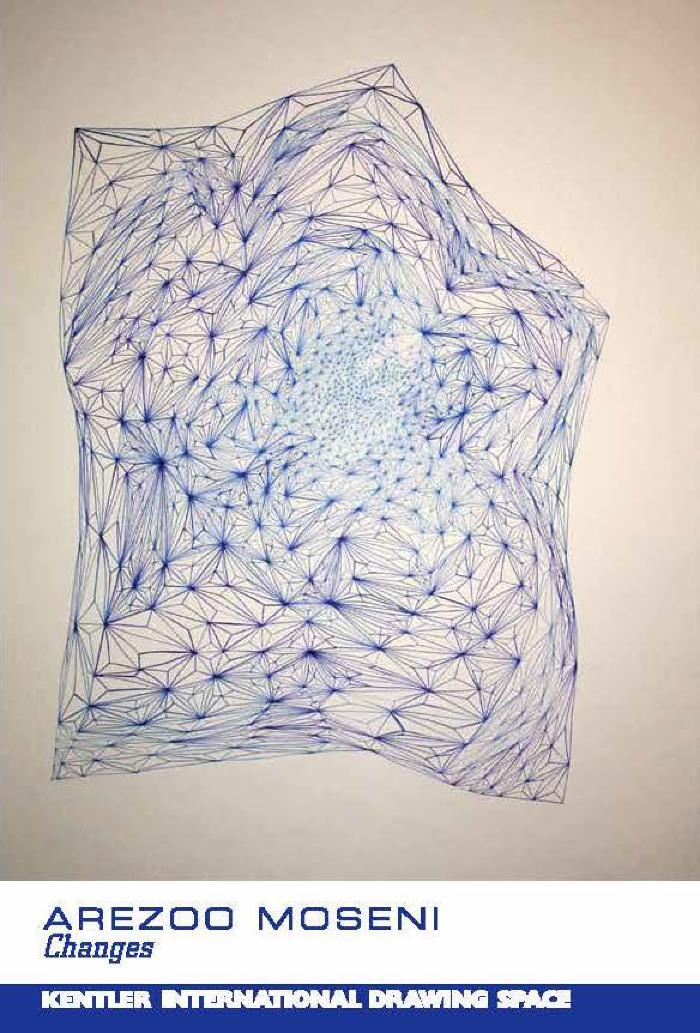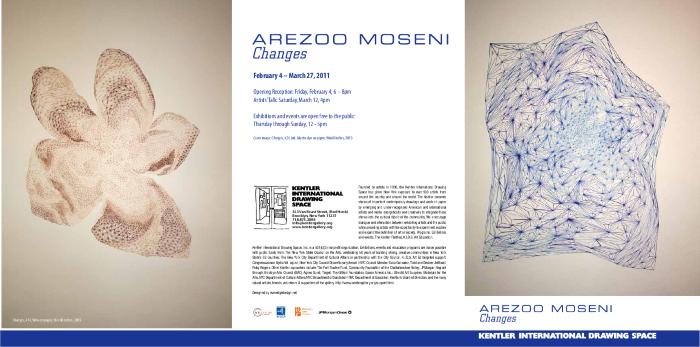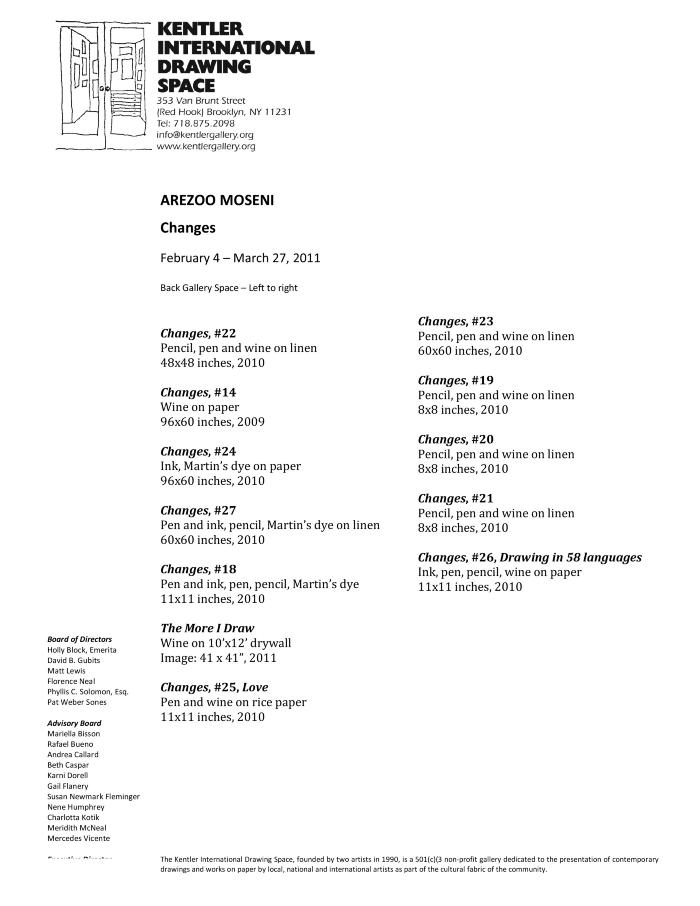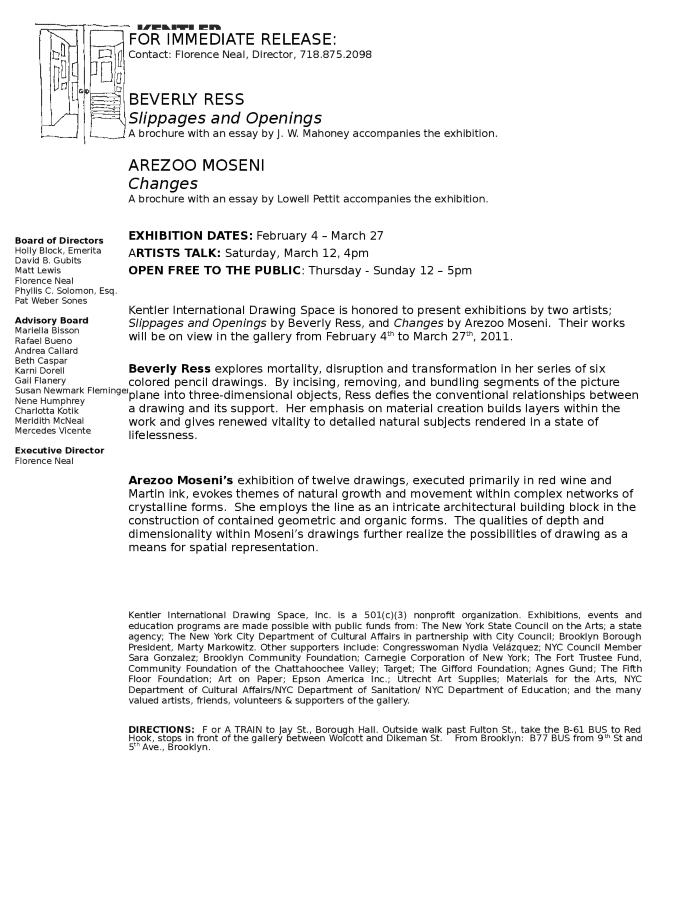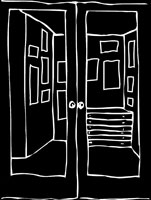exhibition
Arezoo Moseni, Changes
Date
February 4 – March 27, 2011Opening Reception
February 4, 2011exhibition Images
Click to Enlarge.
Press and Promotion
About the exhibition
Solo exhibition, back gallery space
There's a quiet magic in interrogating the maze of lines in a Giacometti portrait--of pulling an unmistakable cheek-bone, brow or jaw line from an otherwise wild and seemingly impenetrable tangle of thin brush strokes. The same is true of a Morandi still-life--of visually separating one discreet vase from another in a tabletop composition where they are curiously the same height and almost the same color. Matisse in Morocco sets up a similar visual riddle --where competing patterns of wallpaper, bedding and clothing introduce divergent scale shifts and perspectives into a beautiful and yet dissonant picture plane.
Large and small, formal and informal, it's the stuff of the finest drawing. It's the simple pleasure of great art to instigate careful, sustained looking, reading; art which coaxes another dimension from two, and by extension, animates a new story from the same humble materials which have defined drawing and painting for centuries.
The same should be said of the engaging art of Arezoo Moseni. Differentiating flatness from depth, concave from convex, interior from exterior, the organic from the architectonic and the abstract from the representational are among the challenges posed by Moseni's subtle practice. While there's room to breathe in her contemplative pictures, afforded by wide margins of the paper or linen, there's no place to hide--no tangent taking us off the page, or really even off the center of the composition.
Like a mobius strip, a latticework of repeating geometries, her lines circle back onto themselves. They appear to have no fixed beginning or end. They emerge from the page, bleed and dart and intersect one another. The resulting forms seem to grow organically, pulse.
By extension, the associations from Moseni's imagery-- topographical, botanical, medical, art historical and fantastical--are myriad. Are her subjects mandalas, flying carpets, flowcharts or cell cultures? Planes or volumes torque and weave in and out of focus and continually ebb and flow, push and pull in terms of scale, saturation and legibility. On the one hand, Moseni picks up where Buckminster Fuller left off with her confident and austere architectural vocabulary. On the other, she builds on a deep landscape tradition, which dispenses with a single vanishing point. On yet another level, her work seems to honor an all-over abstraction we associate with early Philip Guston in particular, and also Mark Rothko, Arshile Gorky and Lee Bontecou. Moreover, it parallels the key features of process art in its serial systems--to say nothing of obsessive ritual from an Olympian drawer such as Louise Bourgeois. Lastly, the arabesques of Sol LeWitt's scribbled wall drawings come to mind as yet another possible precedent or inspiration.
The list of different paths leading to and from Moseni's work continues--"Rose is a rose is a rose is a rose..." How do we put all the pieces together? Buckminster Fuller and Gertrude Stein by way of Song dynasty Chinese landscape painting, postwar abstraction and minimalism--that's no small feat nor short discussion.
Moseni's poetic tableaux pay homage to many disparate strains of modern and ancient, Western and non-Western, art history. Furthermore, there's an alchemy in play as well. In addition to working in more conventional mediums such as ink and pencil, Moseni’s principal medium is red wine, as evidenced in her site-specific drawing The More I Draw. And so it goes. Within the diverse, peripatetic tradition of drawing where the deliberate act of mark making--arguably little changed from the time the first line was dragged underfoot--finds its enduring charge and contemporary voice through an artist working today. In Arezoo Moseni, drawing has another kindred spirit, friend and champion.
At a moment when drawing can seem the antiquated discipline of a different time and place, increasingly pressed to the margins, Moseni reminds us how essential drawing remains. Above all, she's documenting the timeless virtues and mysteries of drawing itself.
- Lowell Pettit
Lowell Pettit, of Pettit Art Partners, is an art adviser, educator and independent curator. (back space)
Related event: March 12, 2011 - Arezoo Moseni Artist's Talk



